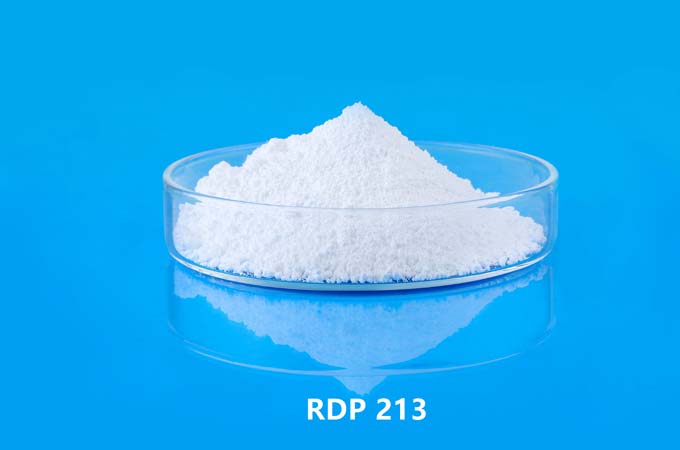Hydroxypropyl methylcellulose (HPMC) is an organic polymer compound commonly used in gypsum products, which can significantly improve the properties of gypsum. In the preparation process of gypsum materials, the addition of HPMC has a significant impact on the viscosity, water retention, processing performance and mechanical properties of gypsum.
1. Increase viscosity and stability
HPMC plays a thickening role in gypsum slurry and increases the viscosity of the slurry. This thickening effect can enhance the construction performance of gypsum slurry, making it easier to apply and level, and reduce sagging. In addition, the addition of HPMC can improve the stability of the gypsum slurry and prevent the slurry from delaminating or settling during the mixing process. This is critical in the construction and use of plaster, as a stable slurry ensures the quality and consistency of the plaster product.
2. Improve water retention
HPMC has good water retention and can form a water-retaining film in the gypsum slurry to reduce the rapid evaporation of water. This water retention effect can significantly extend the operable time of the plaster, giving construction workers more time to make trimmings and adjustments. In addition, improved water retention properties can reduce cracks and shrinkage during the drying process of gypsum, improving the surface quality and smoothness of the finished product.
3. Improve construction performance
Adding HPMC to gypsum slurry can improve its construction performance. HPMC can optimize the rheological properties of gypsum slurry, making it smoother and more uniform during application and laying. This characteristic not only helps improve construction efficiency, but also ensures the surface quality of gypsum products. In addition, HPMC can also reduce flying dust that occurs during the construction process of gypsum slurry and improve the construction environment.
4. Improve mechanical properties
HPMC can improve the mechanical properties of gypsum products by strengthening the internal structure of gypsum slurry. The fiber network structure formed by HPMC in gypsum can improve the flexural strength and compressive strength of gypsum, making gypsum products stronger and more durable. In addition, the reinforcing effect of HPMC can also improve the toughness and impact resistance of gypsum products, and reduce damage to gypsum products during transportation and use.
5. Enhance bonding performance
Among gypsum bonding materials, HPMC can enhance its bonding properties by increasing viscosity and water retention. The high-viscosity slurry formed by HPMC in the gypsum binder can improve the bonding strength between the gypsum and the base material, making the bond stronger and more durable. This enhancement effect is especially obvious in the laying of plaster products on walls and floors, which can effectively prevent peeling and cracking.
6. Improve durability
The addition of HPMC can improve the durability of gypsum products. Since HPMC can effectively control the evaporation rate of water, it can reduce cracking and shrinkage during the drying process of gypsum, thus improving the overall durability of gypsum products. In addition, HPMC can also form a protective film in gypsum to reduce the erosion of gypsum by the external environment and extend the service life of gypsum products.
7. Improve crack resistance
Gypsum is prone to shrinkage and cracking during the hardening process, and the addition of HPMC can improve this problem. HPMC slows down the loss of water and reduces the shrinkage of gypsum by forming a water-retaining film and increasing the viscosity of the slurry. This function can not only prevent cracks in the gypsum during the hardening process, but also reduce cracking on the surface of gypsum products, ensuring the aesthetics and service life of the product.
8. Adjust rheological properties
The role of HPMC in gypsum slurry also includes adjusting its rheological properties to improve the fluidity and operability of the slurry. The presence of HPMC can increase the plasticity and viscoelasticity of the slurry, making it easier to adjust and shape during the construction process. This is especially important for complex-shaped gypsum products, which can improve construction efficiency and surface quality of the products.
9. Environmental protection and safety
As an organic polymer material, HPMC has good biodegradability and safety. The use of HPMC in gypsum products does not produce harmful gases or pollutants and is environmentally friendly. Compared with other chemical additives, the environmental protection performance of HPMC makes its application in building materials more in line with the requirements of modern environmental protection and sustainable development.
10. Application examples
In practical applications, HPMC is often used in various gypsum products such as gypsum plaster, gypsum board, and gypsum adhesive. For example, in gypsum plaster materials, HPMC can improve the workability and durability of the material; in gypsum board, HPMC can improve the flatness and strength of the board; in gypsum binders, HPMC can enhance its bonding ability and Water retention.
HPMC plays a significant role in enhancing the properties of gypsum. By improving the viscosity, water retention, construction performance and mechanical properties of gypsum slurry, HPMC can improve the quality and durability of gypsum products while also having good environmental protection and safety. With the continuous development of building materials technology, the application prospects of HPMC in gypsum materials will be broader.
Kima Chemical’s cellulose ether products, such as wholesale HPMC, are perfect for numerous industrial applications. Supported by our technical expertise, we offer businesses innovative, high-quality solutions designed to improve production processes, enhance product quality, and meet industry-specific requirements.
 English
English 日本語
日本語 français
français Deutsch
Deutsch Español
Español italiano
italiano русский
русский português
português العربية
العربية Türkçe
Türkçe Nederland
Nederland



